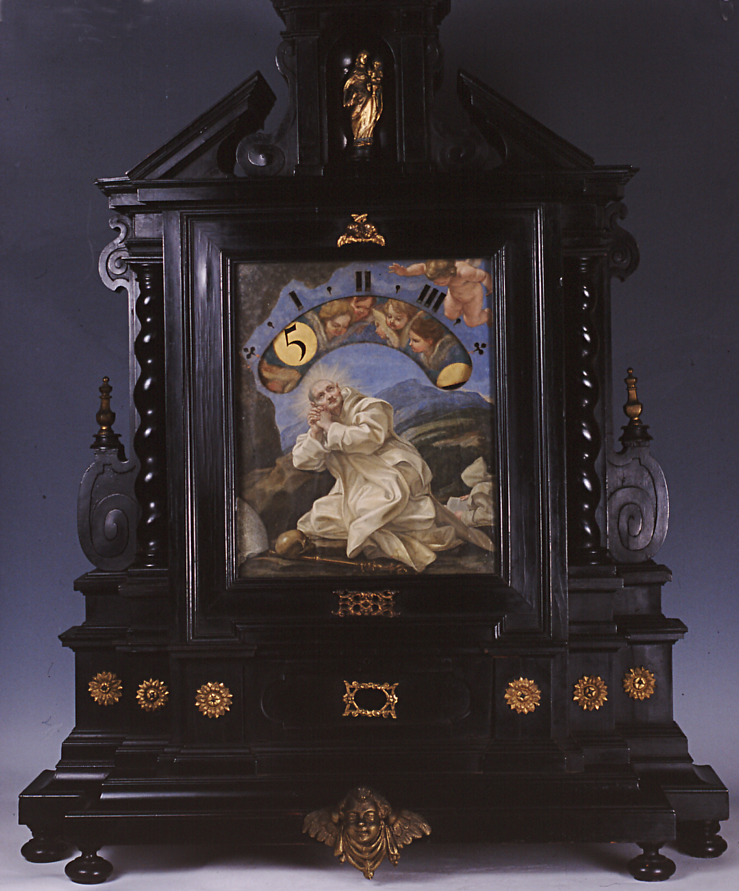
Click here to view image
Night clock
Matteo Luxoro 1945 Genova - legato
Campani, Giuseppe
abaco
1650 - 1700 - XVII
M.G.L. 89
Unità di misura: cm; Altezza: 98; Larghezza: 73,5; Profondità: 23
ebano intagliato, bronzo fuso, bronzo cesellato e dorato
Un'ostinata illusione: la misurazione del tempo e gli orologi Luxoro - Genova - 2004
The monumental clock is closely connected to the production of Notturni initiated in Rome by the Campani brothers and in particular to the figure of Giuseppe Campani. As for the painting on the exhibition, depicting Saint Bruno at Prayer, the attribution to Gaulli, whose activity as a clock painter is documented, has been proposed. Night clock with carved ebony case; architectural structure with articulated base, rectangular display flanked by twisted columns and volute corbels; pediment consisting of a broken gable with a niche containing a bronze statuette of the Madonna and Child. Rotating disc for reading the hours at night. Painted display depicting Saint Bruno in prayer and a rugged landscape in the background, designed in the style of Pier Francesco Mola.




